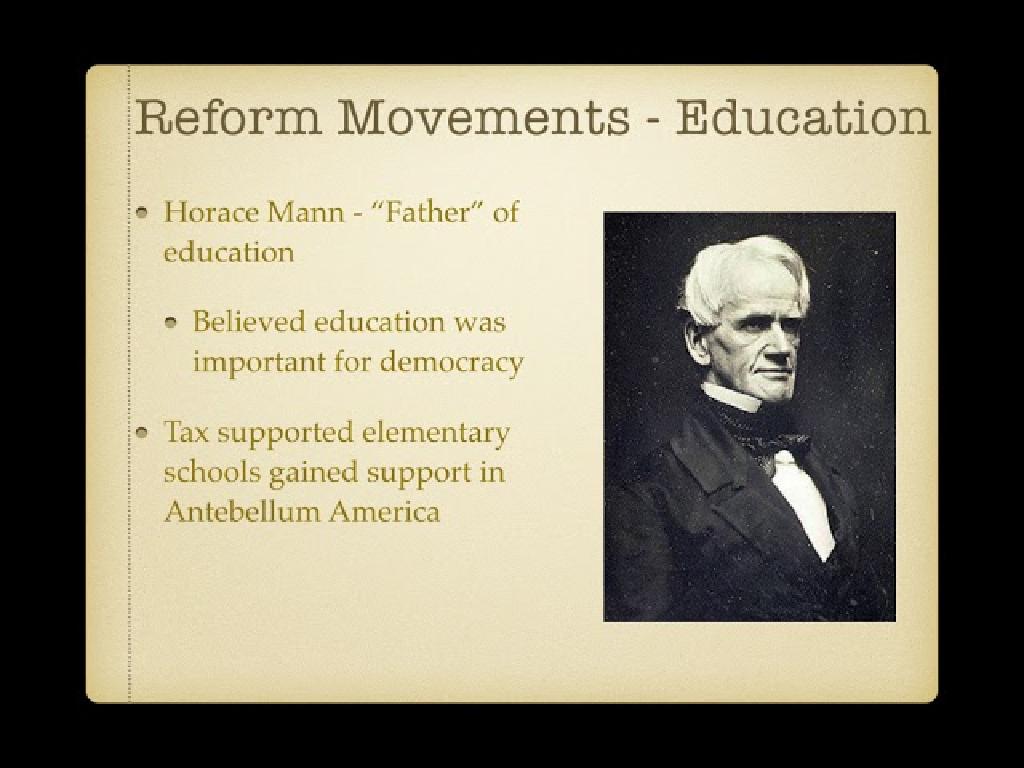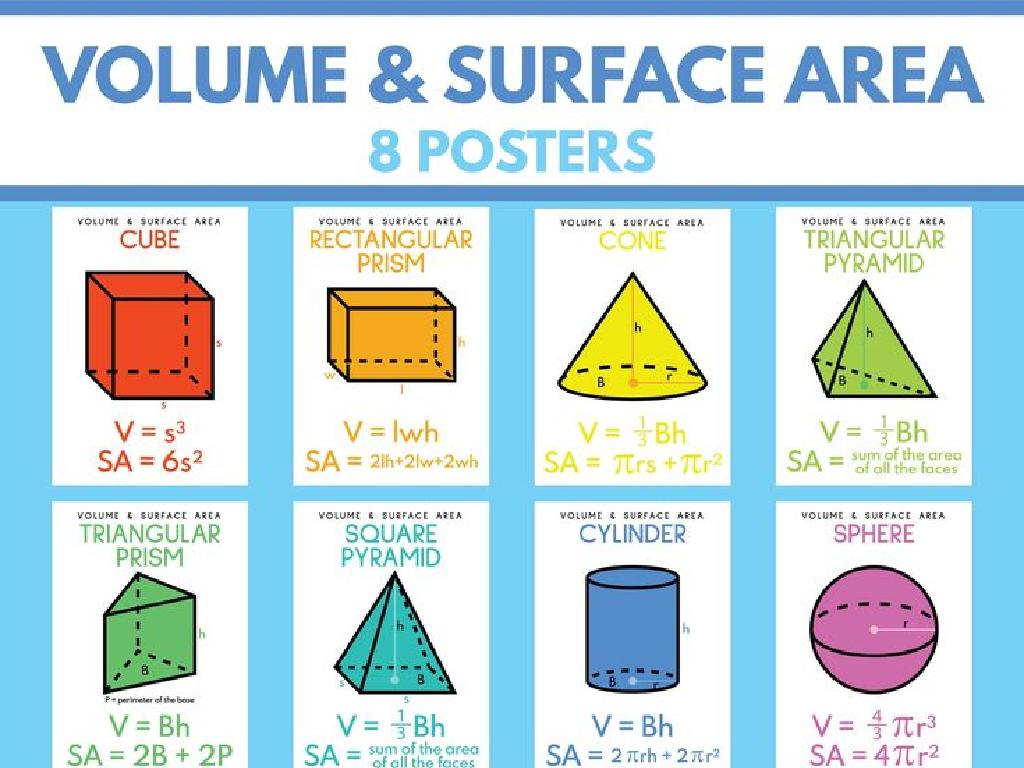Add And Subtract Mixed Customary Units
Subject: Math
Grade: Fifth grade
Topic: Customary Units Of Measurement
Please LOG IN to download the presentation. Access is available to registered users only.
View More Content
Introduction to Customary Units
– Learn customary measurement units
– Examples: inches, feet, yards, miles
– Smaller to larger: 12 inches in a foot, 3 feet in a yard, 1760 yards in a mile
– Understand ounces, pounds, gallons
– Weight and volume: 16 ounces in a pound, 128 ounces in a gallon
– Significance in daily life
– Used in cooking, construction, travel, and more
|
This slide introduces students to the customary units of measurement commonly used in the United States. It’s crucial for students to understand these units as they are widely applied in various aspects of everyday life, such as cooking, construction, and travel. Provide examples to illustrate how these units are used in practice: for instance, how many inches are in a foot, or how many ounces are in a pound. Encourage students to think of situations where they have encountered these units outside of school. This foundational knowledge will be built upon when they learn to add and subtract mixed units.
Review: Adding & Subtracting Whole Numbers
– Review basic addition & subtraction
– Understand place value importance
– Place value determines the value of a digit in a number
– Solve simple addition problems
– Example: 123 + 456
– Solve simple subtraction problems
– Example: 789 – 321
|
Begin the lesson with a quick review of how to perform basic addition and subtraction with whole numbers, which lays the foundation for understanding mixed customary units. Emphasize the importance of place value, as it is crucial when lining up numbers to add or subtract. Provide simple numerical examples to illustrate straightforward addition and subtraction, ensuring students are comfortable with these operations before introducing mixed units. This will help them grasp more complex concepts involving mixed customary units. Encourage students to practice with additional problems and to ask questions if they encounter difficulties.
Understanding Mixed Units
– Define mixed units
– Units like 3 feet 4 inches combine two measurements
– Purpose of mixed units
– Mixed units are used for precision in everyday measurements
– Real-life mixed unit examples
– Height of a person, or length of a room
– Practice with mixed units
– Add 2ft 5in to 4ft 6in or subtract 1ft 7in from 5ft 2in
|
This slide introduces students to the concept of mixed units, which are combinations of two different units of measurement. It’s important to explain that mixed units help us to be more precise in everyday situations, such as measuring height or the length of objects. Provide relatable examples that they might encounter in their daily lives. Encourage students to think of their own examples and understand why we don’t always measure in just feet or inches. In the next class, we will practice adding and subtracting mixed units to reinforce their understanding.
Adding Mixed Customary Units
– Line up units before adding
– Add units separately
– Add feet with feet, inches with inches
– Combine totals for final sum
– Sum feet, then inches; convert if needed
– Example: 2 ft 7 in + 4 ft 5 in
– 2 ft + 4 ft = 6 ft, 7 in + 5 in = 12 in, so 6 ft 12 in = 7 ft
|
When adding mixed customary units like feet and inches, it’s crucial to align the same units before performing the addition. Teach students to add feet to feet and inches to inches separately. After obtaining the totals, they should combine them to get the final sum, converting inches to feet if there are 12 or more inches. For example, when adding 2 feet 7 inches to 4 feet 5 inches, we first add the feet (2+4=6 feet) and then the inches (7+5=12 inches). Since 12 inches equal 1 foot, the final answer is 7 feet. This method helps students understand the relationship between different units and ensures accuracy in their calculations.
Subtracting Mixed Customary Units
– Borrow from larger unit when needed
– Like borrowing in subtraction, take from the next larger unit
– Subtract units separately
– Combine the results
– Example: 3 gal 1 qt – 1 gal 2 qt
– Start with gallons: 3 gal – 1 gal = 2 gal. Then quarts: 1 qt – 2 qt requires borrowing.
|
When subtracting mixed units, students may need to ‘borrow’ from the larger unit if the smaller unit in the minuend is less than the subtrahend. Teach them to subtract each unit separately, starting with the largest unit. After subtracting, they should combine the results to get the final answer. For the example, show that 1 quart is less than 2 quarts, so they need to borrow 1 gallon (which is 4 quarts) and add it to the 1 quart to make it 5 quarts. Then, 5 quarts – 2 quarts = 3 quarts. The final answer is 2 gallons 3 quarts. This slide will help students visualize the process of borrowing and combining units in subtraction.
Practice Problems: Adding & Subtracting Customary Units
– Solve practice problems as a class
– Explain your problem-solving process
– Share how you figured out the answer
– Address misconceptions promptly
– If a mistake is made, we’ll fix it together
– Reinforce correct measurement concepts
– Use examples like 3 ft 4 in + 2 ft 6 in
|
This slide is focused on engaging students with practice problems to solidify their understanding of adding and subtracting mixed customary units. Start by working through problems as a class, fostering a collaborative learning environment. Encourage students to articulate their thought process, which helps in assessing their comprehension and correcting any errors in real-time. Addressing misconceptions immediately helps prevent the reinforcement of incorrect methods. Use relatable examples and ensure students understand how to properly combine and convert units, such as feet and inches. The goal is to build confidence and accuracy in working with customary units.
Class Activity: Measurement Conversion Relay
– Divide into teams for the relay
– Solve unit conversion problems
– Convert mixed customary units, like feet to inches
– Each correct answer advances the team
– First team to finish wins
|
This activity is designed to make learning about customary unit conversions interactive and fun. Divide the class into small teams, and set up a relay race where each team must solve a series of problems involving the conversion of mixed customary units (e.g., feet to inches, gallons to quarts). Each team member takes a turn solving a problem before passing the baton to the next. The team that solves all their problems correctly and crosses the finish line first wins. Ensure that the problems vary in difficulty and cover a range of units. Have a mix of easier conversions and more challenging ones that require adding or subtracting different units. This will cater to different skill levels and ensure that all students are engaged. Prepare a demonstration problem to show the class before starting the activity. Provide a conversion chart for reference if needed.
Conclusion & Homework: Customary Units
– Review today’s key points
– Homework: 10 mixed unit problems
– Add & subtract lengths, weights, volumes
– Study for the upcoming quiz
– Quiz covers all customary units topics
– Practice makes perfect!
|
As we wrap up today’s lesson on adding and subtracting mixed customary units, it’s important for students to consolidate their learning through practice. The homework assignment of 10 problems will help reinforce their skills. Remind students that these problems are not just about getting the right answer, but also about understanding the process. Encourage them to review their notes and textbook examples to prepare for the quiz on customary units next class. Emphasize the importance of studying a little each day instead of cramming the night before. Offer some study tips, such as making flashcards for the units of measurement or working with a study buddy to practice problems.






